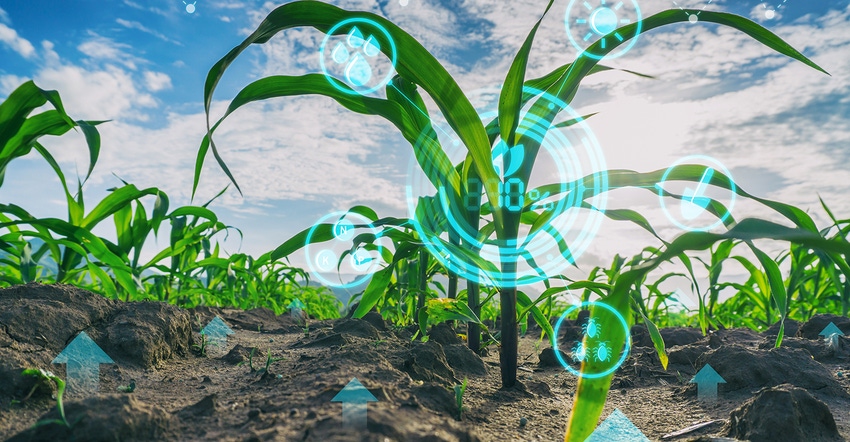
There’s little doubt that agriculture is seeing another wave of innovation. In a business that has seen constant change since the advent of iron horsepower and hybrid corn, this latest revolution is as much digital as it is agronomic. Recently, Minneapolis law firm Dorsey & Whitney conducted a webinar with George Sent, managing director of Cascadia Capital’s Food & Agribusiness practice, to dig into this ag tech investment boom and what it means for the industry.
Sent’s view, coming from more of an outside perspective, offers insight into key drivers that farmers and others in the food industry may want to better understand. Some are familiar, some may not be.
“We’re seeing a significant level of adoption with the global need for high-quality foods and beverages,” Sent explained. “The rationalization of the agribusiness industry is to leverage tech to be more efficient, have more professionalization.”
This move has pushed agriculture to look at technologies that enable greater efficiency, greater yield and, as he said, “at the end of the day, offer greater profit. Technology can be a backbone on which farms and folks in the “agrispace” can rely to continue to improve their businesses.”
Sent is looking at the macro picture of agriculture, from dirt to plate, and how technology is being deployed in food and feed crops as well as livestock. There are challenges. For example, as larger farms work to capture more data, they still can struggle with ways to put that information to use.
He likens this chicken-and-egg issue to the early days of the organic food industry. “I think back 15 years ago when we had an organic juice line [when he worked at Smucker’s] and we wondered if we could have enough organic apples and raw material to fulfill our needs. The issue for the farmer back then was, ‘Should I plant enough organic, or will there be enough folks to buy the product?’” Sent said.
That’s the issue farmers are facing now, but Sent is quick to add that there are more systems coming on line that are helping farmers make better decisions from the data they collect. “I think there’s a bit of trial and error in collecting that baseline pile of data, and to see how it can be applied. Once you have the information and understand how it all relates, you have to know how it will impact the ‘knowledge bucket’ for your decision-making,” he said.
He noted that this process is becoming more refined, and that farmers and others in the industry are getting closer to “nirvana,” or wisdom, which comes from the capture of the data. “That has to be open-source, where my data is shared with you and yours is shared with me across different geographies,” Sent added.
In the real world
The precision ag technology business could grow to more than $240 billion by 2030, according to some data shared during the webinar, but how might that occur? Sent looks at decision-making on the farm and the challenges farmers face.
He shared that farmers are dealing with decisions on a range of issues in each crop year, and that the technology will allow for constant monitoring that will help achieve optimal performance in a range of areas — from hybrid selection to crop protection to fertilization. Of course, there’s one area where the tech offers little help: “You can’t control the weather,” Sent added.
He outlined six areas, or dimensions, that impact a farm — seed, fertilizer, crop protection, weather, soil and field characteristics. Farmers have control over the first three, but little control over the last three.
To start, larger companies and larger farms may take on these latest tools — from field sensors to enhanced software — and smaller operations will follow. “The smaller enterprise has to wade in carefully and not spend money; they are more skeptical of any technology adoption and need to see the profit potential,” he said.
He did note that one area that might hold back adoption is the age of the farmer, and it’s a life stage question. “In some family farm operations, there can be older generations involved. And they look at the tech and, while they find it interesting, they’re not interested in adopting it for the last 10 years of their farming career; succession issues can cause certain operations not to use technology to their greatest effect.”
That’s a question every farm has to ask. Is this the right time? How does this tech fit my business model now? Will the next generation benefit from this investment?
Beyond that, however, comes the driver that’s pushing a range of hardware technologies in agriculture —available labor. That can drive farmers to take on new technologies in new ways.
Evolving industry
Sent offered a look at different companies in the industry, from those that started with an ag focus — such as CropZilla or Granular (now owned by Corteva); and those from what would be traditionally outside ag — including Google and IBM.
At the end of his presentation, Sent showed a kind of merging of these two disparate types of companies into a tighter core of tech firms. Whether that will happen remains to be seen. Already, some smaller startups have been snapped up by major companies. It’s an ongoing issue for farmers to watch.
He cautioned that this push-ahead with ag tech will have winners and losers, noting that technology is “a great enabler of business,” and it becomes important to be competitive in the marketplace. The traditional ag producer that’s not using technology today: “In some sense, you will fall behind, and you won’t benefit from the potential for open-source collaboration,” he said.
The ag tech industry is evolving and continues to grow. For farmers, understanding the tools coming to market and how to best deploy them in the farm business will offer value.
About the Author(s)
You May Also Like




